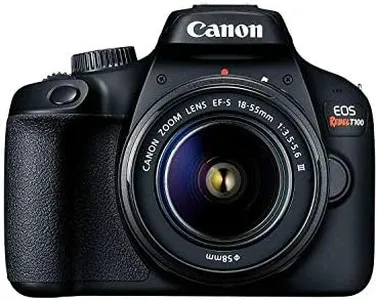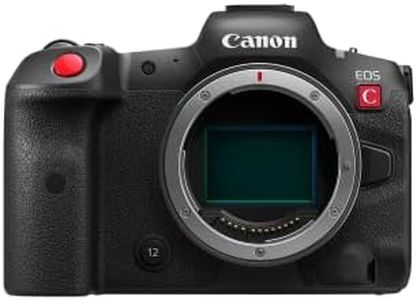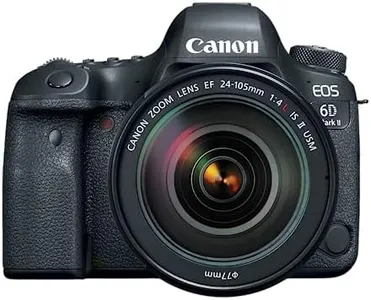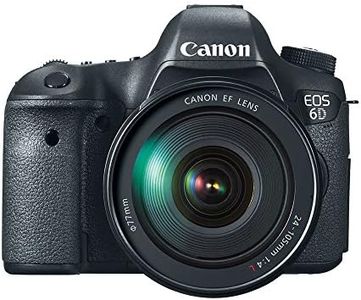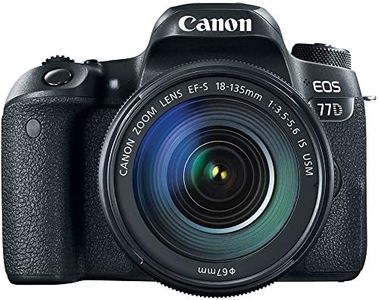10 Best Canon DSLR Cameras 2025 in the United States
Our technology thoroughly searches through the online shopping world, reviewing hundreds of sites. We then process and analyze this information, updating in real-time to bring you the latest top-rated products. This way, you always get the best and most current options available.

Our Top Picks
Winner
Canon EOS R5 Mirrorless Camera RF24-105mm F4 L is USM Lens Kit, Full-Frame Hybrid Camera, 8K Video, 45 Megapixel CMOS Sensor, DIGIC X Image Processor, Up to 12 FPS, RF Mount, Black
Most important from
918 reviews
The Canon EOS R5 is a powerful full-frame mirrorless camera well-suited for photographers and videographers looking for high resolution and versatile performance. It features a large 45-megapixel sensor that captures sharp, detailed images, supported by Canon’s advanced DIGIC X processor. The ISO range from 100 to 51200 (expandable to 102400) allows for good image quality even in low light, though extremely high ISO settings might introduce some noise. Autofocus is a standout with Dual Pixel CMOS AF covering nearly 100% of the frame and over a thousand focus points, plus advanced subject tracking for people and animals, making it reliable for fast-moving subjects. Continuous shooting speeds are impressive, reaching up to 12 frames per second mechanically and an even faster 20 fps electronically, great for action photography.
Video features are cutting-edge, supporting 8K resolution, which is excellent for professional-level videography but may require high-end memory cards and fast storage solutions. The camera body is solid and ergonomically designed, with a bright, high-resolution electronic viewfinder and a tilting touchscreen, making it comfortable to use for long shoots. The kit lens (RF 24-105mm F4 L) is versatile and sharp, and the RF mount ensures compatibility with Canon’s growing lineup of RF lenses, offering future upgrade options.
The camera’s high-end features come with a high price tag, and 8K video recording has a 30-minute limit per clip, which might be restrictive for some videographers. Also, the advanced features and settings can be complex for beginners to fully leverage without some learning. The EOS R5 represents an excellent choice for serious photographers and filmmakers who want a blend of high resolution, fast autofocus, and top-tier video capabilities in a durable, well-built package.
Most important from
918 reviews
Canon EOS Rebel T7 DSLR Camera|2 Lens Kit with EF18-55mm + EF 75-300mm Lens, Black
Most important from
8198 reviews
The Canon EOS Rebel T7 is a solid choice for beginners or hobbyists looking to step into DSLR photography with a reliable and easy-to-use camera. It features a 24.1-megapixel APS-C sensor, which delivers good image quality and detail suitable for everyday photography. The ISO range of 100 to 6400 (expandable to 12800) offers decent performance in various lighting conditions, though it might show some noise in very low light. Autofocus is handled by a 9-point system with an AI Servo mode for tracking moving subjects, which is effective but somewhat basic compared to more advanced models. Continuous shooting at 3 frames per second is sufficient for casual action shots but may feel slow for fast-paced photography.
Video capabilities include Full HD 1080p recording at 30 fps, which is fine for casual videography but lacks 4K support. The camera comes with two lenses (18-55mm and 75-300mm), covering wide-angle to telephoto, offering good flexibility for different shooting needs right out of the box. Build-wise, it is lightweight (about 3 pounds) and ergonomically designed for comfortable handling, though it is not weather-sealed or water-resistant. The optical viewfinder covers approximately 95% of the frame, which is standard for this class. Additional features like built-in Wi-Fi and NFC make it easy to share photos wirelessly.
While it lacks advanced autofocus points and high-speed burst shooting found in higher-end DSLRs, the Rebel T7 kit provides a balanced package for those starting DSLR photography or wanting a dependable camera for general use.
Most important from
8198 reviews
Canon EOS R6 Mark II Mirrorless Camera (Body Only), Full-Frame Camera, 24.2 Megapixel CMOS Sensor, Photo and Video Capabilities, Black
Most important from
504 reviews
The Canon EOS R6 Mark II is a powerful full-frame mirrorless camera that excels in both photography and videography, making it a great choice for serious enthusiasts and professionals. With a 24.2-megapixel sensor, it captures stunningly detailed images, even in low-light conditions, thanks to its wide ISO range of 50 to 204800. The camera’s DIGIC X image processor enhances performance, ensuring minimal noise and high-resolution outputs.
One of its standout features is high-speed continuous shooting, allowing up to 40 frames per second, which is ideal for capturing fast-moving subjects such as sports or wildlife. Its autofocus system is highly advanced, with the ability to track head, face, and eye detection in both humans and animals, ensuring sharp focus in dynamic scenarios.
For videographers, the R6 Mark II impresses with 4K recording capabilities and up to 6 hours of continuous Full-HD video. The vari-angle touchscreen makes it user-friendly for composing shots from various angles, while the electronic viewfinder provides a bright, clear view of subjects for precise framing.
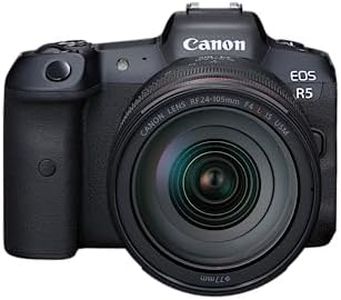
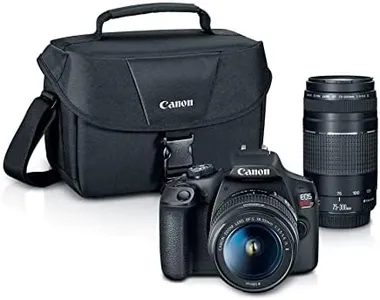
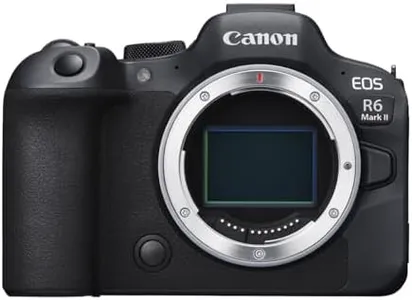

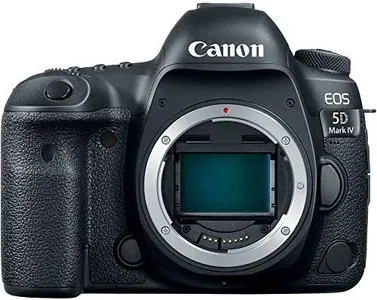
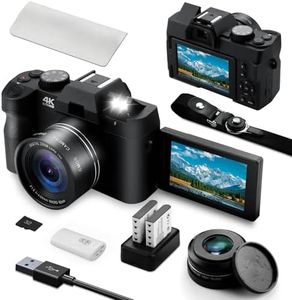
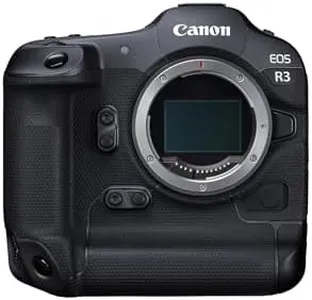
![Canon Digital SLR Camera Body [EOS 80D] and EF-S 18-135mm f/3.5-5.6 Image Stabilization USM Lens with 24.2 Megapixel (APS-C) CMOS Sensor and Dual Pixel CMOS AF (Black)](https://images-proxy.bestreviews.guide/cMb5zsGrsZcU4VmvVEuOB7GRPcY=/0x300/https://m.media-amazon.com/images/I/51sRWxXzUTL._AC_CX679_.jpg)
